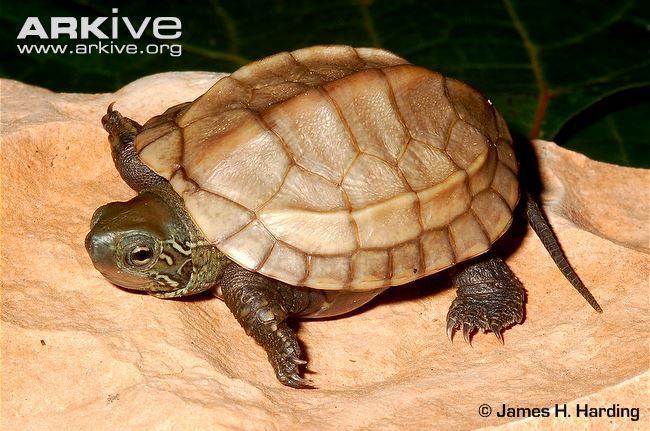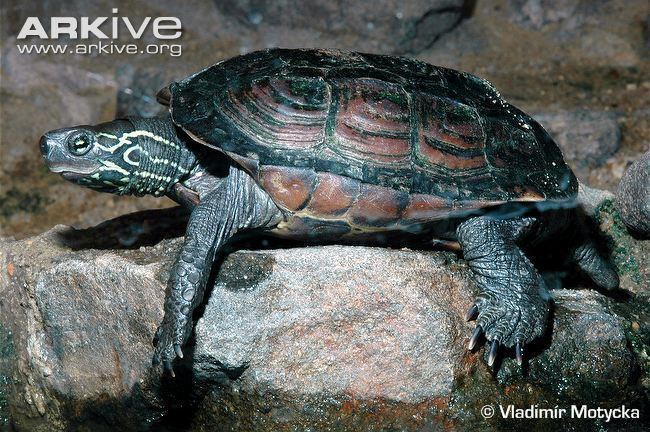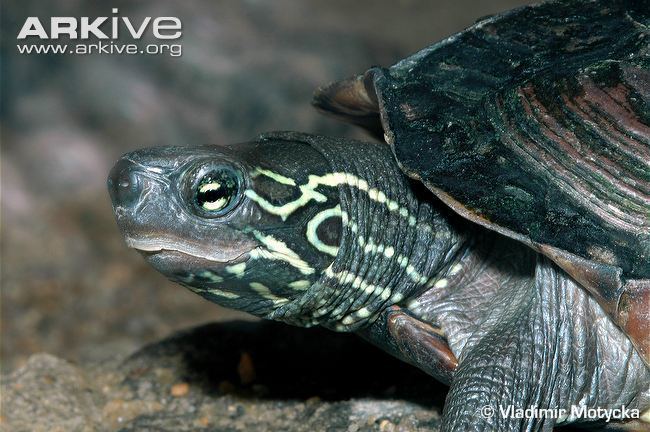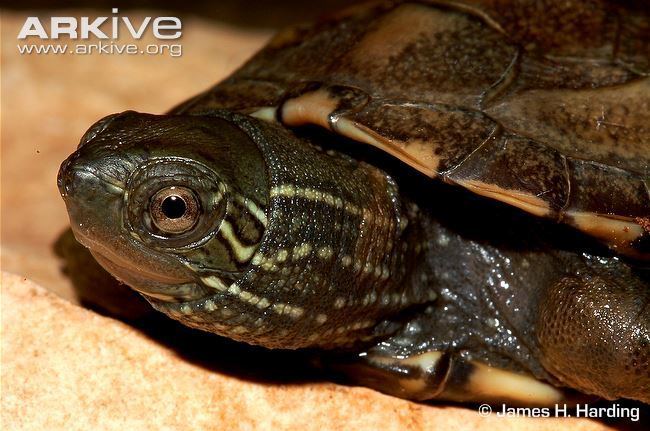Order Testudines Rank Species | Class Reptilia Phylum Chordata | |
 | ||
Similar Japanese pond turtle, Pond slider, Yellow pond turtle, Red‑eared slider, Mauremys | ||
Mauremys reevesii, commonly known as the Chinese pond turtle, the Chinese three-keeled pond turtle, or Reeves' turtle, is a species of turtle in the family Geoemydidae, a family which was formerly called Bataguridae. The species is endemic to Asia.
Contents
- Geographic range
- Habitat and behaviour
- Conservation status
- Etymology
- Hybridization
- Farming
- Pet trade
- East Timor
- References

Geographic range
Mauremys reevesii is found in China, Japan, Korea and Taiwan.
Habitat and behaviour

M. reevesii is semiaquatic, and basks in the sun on rocks or logs and can often be found leaving water to do so. They can usually be found in marshes, relatively shallow ponds, streams, and canals with muddy or sandy bottoms.
Conservation status

The Chinese three-keeled pond turtle (M. reevesii) is threatened by competition with released pet red-eared sliders (T. s. elegans), overhunting (its plastron is used in traditional Chinese medicine), capturing for the pet trade and wild habitat destruction. The IUCN considers M. reevesii an endangered species. This species, fortunately, breeds well in captivity.
Etymology
The specific name, reevesii, is in honor of English naturalist John Reeves.
Hybridization

This species is notorious for its ability to produce hybrids with other Geoemydidae, even species that are only distantly related. The supposed new species "Mauremys" pritchardi was based on a hybrid of unknown origin between a male of this species and a female yellow pond turtle (Mauremys mutica). Furthermore, it has hybridized with the Chinese stripe-necked turtle (Ocadia sinensis), female Malayan box turtles (Cuora amboinensis), a male four-eyed turtle (Sacalia quadriocellata), and the Japanese pond turtle (Mauremys japonica) in captivity.
Any individuals that are available as pets therefore need to be kept separate from other members of the family.
Farming
M. reevesii is one of the species raised on China's turtle farms. According to a 1998 survey, 548 farms raised this turtle species in four provinces in China. The statistical data from different provinces were in different formats; however, two provinces reported 20,650 turtles living on 26 farms, with 5,000 animals reproduced annually; the other two provinces reported the total weight of their turtles, namely some 260 tons of these animals on 522 farms. Over the five-year period, 1990–1995, 13 traditional Chinese medicine factories consumed 430 tons of C. reevesii plastrons.
Based on a more recent (2002) survey of 684 Chinese turtle farms (less than half of all 1,499 turtle farms that were registered at the time), researchers found that 2.8 million of turtles of this species (reported there as Chinemys reevesii) lived on these farms, with some 566,000 specimens sold by farmers every year. The total weight of the annual product was 320 tons, with the estimated value of over US$6 million, which makes the market value of a Chinese pond turtle equal to around $12—about twice as much that of the most common farmed species, Pelodiscus sinensis. Taking into account the registered farms that did not respond to the survey, as well as the unregistered producers, the total amounts must be considerably higher.
Pet trade
Chinese pond turtles are also farmed for the pet trade. In captivity, they require similar care to red-eared sliders (T. s. elegans).
East Timor
During surveys in East Timor (Timor-Leste), a small but well-established population of M. reevesii was found living in marshes near the city of Dili. The species is not native to the island and was possibly introduced by locals of Chinese origin. East Timor is home to the Roti Island snake-necked turtle of the timorensis subspecies (sometimes considered a species of its own). Although the introduced population of M. reevesii is not known to present a risk to the native turtles per se, they could indirectly present a threat to the natives if confused. M. reevesii from the introduced population are sometimes captured to be sold to people of Chinese origin and this may cause problems if extended to the native turtles. A potential solution is to remove the introduced M. reevesii (thereby restricting the trade to captive farmed M. reevesii).
